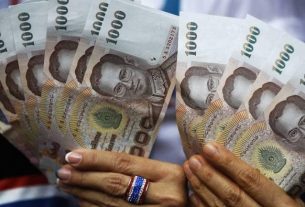
The rising COVID-19 cases has added worries in India especially in the month of April. Earlier, till March, Indian economic recovery was seen to be more certain. The International Monetary Fund (IMF) has stated that India’s debt-to-GDP ratio increased to 90 percent from 74 percent during the COVID-19 pandemic. The agency expects the debt ratio to gradually come down as the economy recovers. In its baseline forecast under the assumption of healthy economic growth in the medium term, the IMF sees debt returning to about 80 percent over time.
Wholesale price inflation (WPI), shot up to 7.4 percent in March 2021 from 4.2 percent in February 2021. This is the highest inflation at the wholesale level witnessed in the last eight years. Inflation in the manufactured products group rose to 7.3 percent in March 2021 from 5.8 percent in February 2021. Inflation in primary article prices rose to 6.4 percent from 1.8 percent and that in power and fuel prices increased to 10.3 percent from 0.6 percent.
India’s merchandise exports rose year-on-year (YoY) by 60.3 percent to $ 34.5 billion in March 2021, as per the revised estimates of foreign trade released by the Directorate General of Commercial Intelligence & Statistics (DGCI&S). The growth came after a steep 34.3 percent fall registered by exports in March 2020. India’s merchandise imports grew YoY by 53.7 percent to $ 48.4 billion in March 2021, after falling by 32.9 percent in March 2020.
POL imports rose by 2.2 percent to $ 10.3 billion, but non-POL imports rose by 77.9 percent to $ 38.1 billion in March 2021. Consequently, trade deficit widened to $ 13.9 billion in March 2021 from nearly $ 10 billion in the year-ago month and $ 13 billion in the preceding month.
In the latest meeting with top officials of public sector banks and select private sector lenders, Reserve Bank of India (RBI) Governor Shaktikanta Das advised banks to remain watchful of the evolving situation and continue taking measures proactively for maintaining their business continuity, sharpening business strategies and raising adequate capital.
The governor has also stressed upon the importance of credit flows in sustaining the nascent economic recovery. Moreover, discussions were held on the progress in the implementation of COVID Resolution Framework, outlook on stressed assets, capital augmentation and liquidity scenario and monetary transmission. The issue of credit flows to different sectors including to stressed sectors, micro, small and medium enterprises (MSMEs) and the retail segment also came up for discussion.
The increasing lockdowns, mobility restrictions and night curfews across key economic hubs are likely to cost the Indian economy $ 1.3 billion a week, up from $ 0.5 billion a week earlier, Barclays stated in a report. On a quarterly basis, containment measures may result in a loss of around 140 bps of nominal GDP in the first quarter.
If the current restrictions remain until May-end, the cumulative loss of economic and commercial activity could be around $ 10.5 billion or around 0.34 percentage points of nominal GDP, it added.
Moody’s Investors Services has stated that the second wave of COVID-19 infections presents a risk to its growth forecast for India as the re-imposition of containment measures will curb economic activity and could dampen market and consumer sentiment.
However, the agency expects the impact on economic activity to be less severe than in 2020 given the focus on micro-containment zones to deal with the current wave of infections as opposed to a nationwide lockdown. It stated that the country’s GDP growth is still likely to be in double digits in 2021 given the low level of activity in 2020.
Goldman Sachs has revised India’s real GDP growth projection for 2021 downwards to 10.5 percent from 10.9 percent, citing fresh restrictions put in place by several states to limit the spread of COVID-19.
The above fundamental factors is estimated to weaken Indian Rupee and we expect USDINR to trade in the range of 72.8-76.8 levels in the month ahead.
Disclaimer: The views and investment tips expressed by investment expert on Moneycontrol.com are his own and not that of the website or its management. Moneycontrol.com advises users to check with certified experts before taking any investment decisions.

